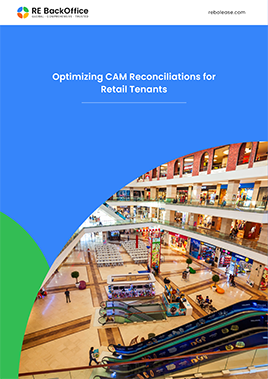
In the realm of commercial real estate, the term demised premises frequently arises. It refers to the portion of a property that is leased or rented to a tenant. This concept is crucial for both landlords and tenants, as it delineates the boundaries of responsibility, maintenance, and usage rights within a property.
What Are Demised Premises?
Demised premises, often mentioned in lease agreements, refer to the specific area of a property that is granted to the tenant under the terms of a lease. This could include the interior space of a commercial building, such as an office suite, retail space, or industrial unit. The demised premises are distinct from common areas, which are shared by multiple tenants and managed by the landlord.
Legal Implications of Demised Premises
1. Lease Agreement Provisions
The lease agreement is the cornerstone of defining the demised premises. It specifies the exact boundaries, including floor plans or detailed descriptions of the space. This clarity is essential to avoid disputes over usage and maintenance responsibilities.
2. Tenant and Landlord Responsibilities
The delineation of demised premises in a lease impacts the responsibilities of both the tenant and the landlord. Tenants are generally responsible for maintaining and repairing the interior of their demised premises, while landlords manage the common areas and structural components of the building.
Types of Demised Premises
1. Office Spaces
Office spaces are a common type of demised premises, typically rented to businesses for administrative purposes. These spaces can range from small suites to entire floors, depending on the tenant's needs.
2. Retail Spaces
Retail spaces in shopping centers or standalone stores are leased to businesses selling goods or services. The demised premises in retail leases often include the interior selling space and sometimes additional storage or back-office areas.
3. Industrial Units
Industrial units, including warehouses and manufacturing facilities, are demised premises leased to companies for production, storage, and distribution. These spaces usually require specific lease terms to accommodate industrial activities.
Key Considerations in Demised Premises
1. Space Measurement
Accurate measurement of the demised premises is crucial. Lease agreements should specify whether the measurement is based on net usable space or includes common areas (gross leasable area). This impacts rental rates and maintenance responsibilities.
2. Fit-Out and Alterations
Tenants often need to customize their demised premises to suit their business operations. Lease agreements should address the extent of permissible alterations and the process for obtaining landlord approval.
3. Maintenance and Repairs
The lease should clearly outline the maintenance and repair responsibilities for the demised premises. Tenants are usually responsible for the interior, while landlords handle the exterior and common areas. This division ensures that the property remains in good condition throughout the lease term.
Importance of Demised Premises in Lease Negotiations
1. Clarity and Avoidance of Disputes
Clearly defining the demised premises in lease agreements helps prevent disputes between landlords and tenants. Both parties have a precise understanding of their rights and obligations, reducing the potential for conflicts over space usage and maintenance.
2. Impact on Rental Rates
The size and condition of the demised premises directly influence rental rates. Tenants need to ensure they are only paying for the space they exclusively occupy and not for common areas or amenities that should be covered by the landlord.
3. Long-Term Planning
For tenants, understanding the demised premises is essential for long-term business planning. Knowing the exact dimensions and layout of the space helps in designing efficient workspaces and planning for future growth or downsizing.
Common Issues and Solutions
1. Boundary Disputes
Boundary disputes can arise if the lease agreement lacks clarity. To avoid such issues, lease agreements should include detailed floor plans and descriptions of the demised premises. Regular inspections and open communication between landlords and tenants can also help mitigate disputes.
2. Maintenance Conflicts
Conflicts over maintenance responsibilities are common in commercial leases. Clear clauses in the lease agreement, specifying who is responsible for different types of maintenance and repairs, can prevent these conflicts. Regular maintenance schedules and prompt communication about repairs can also help.
3. Alteration Approvals
Tenants may need to make alterations to the demised premises to suit their business needs. Lease agreements should outline the process for obtaining landlord approval for alterations, including the types of changes that require approval and any associated costs.
Subletting and Assignment of Demised Premises
1. Subletting Considerations
Subletting involves the tenant leasing all or part of their demised premises to a third party. Lease agreements should specify whether subletting is permitted and under what conditions. Landlords typically require approval rights to ensure that subtenants meet their standards.
2. Assignment of Lease
Assignment involves transferring the lease obligations from the original tenant to a new tenant. Lease agreements should outline the process for assignment, including landlord approval and any associated fees. Assignments can provide flexibility for tenants needing to relocate or downsize.
Impact of Demised Premises on Property Valuation
1. Rental Income
The rental income generated from demised premises significantly impacts property valuation. Consistent rental income from well-defined and managed demised premises enhances a property's market value.
2. Tenant Mix and Property Appeal
The mix of tenants within a property, along with the quality of demised premises, affects the property's appeal to potential buyers and investors. Properties with diverse, high-quality tenants and well-maintained demised premises typically command higher valuations.
Role of Demised Premises in Commercial Property Management
1. Efficient Space Utilization
Effective management of demised premises ensures efficient space utilization. Property managers must balance tenant needs with the property's overall operational efficiency, optimizing space allocation and usage.
2. Enhancing Tenant Satisfaction
Clear definitions and proper management of demised premises contribute to tenant satisfaction. Responsive maintenance, clear communication, and flexibility in accommodating tenant needs enhance the overall tenant experience.
Future Trends in Demised Premises Management
1. Technology Integration
Technology is increasingly influencing the management of demised premises. Digital tools for space planning, maintenance tracking, and tenant communication streamline operations and improve efficiency.
2. Sustainable Practices
Sustainability is becoming a key consideration in managing demised premises. Energy-efficient lighting, HVAC systems, and sustainable materials are increasingly being incorporated into lease agreements and property management practices.
Demised premises play a pivotal role in commercial real estate, serving as the foundation for lease agreements and tenant-landlord relationships. Understanding the nuances of demised premises, from legal definitions to practical considerations, is essential for both tenants and landlords. Clear lease agreements, accurate space measurements, and defined maintenance responsibilities help ensure a harmonious and productive leasing experience.
In summary, demised premises are more than just physical spaces; they are legally defined areas that shape the responsibilities and rights of tenants and landlords. Properly managing these spaces through detailed lease agreements and clear communication is crucial for avoiding disputes and fostering successful business operations.


